“Celebrity Endorsement and influencer marketing is a rising trend that democratized business growth and digital marketing in ways we’ve never seen before. By adding the huge social media follower count of a celebrity to the mix and leveraging their social media channels, celebrity endorsement and social influencer marketing has overtaken conventional mainstream results by far. It is also more trusted than conventional advertising”.
SUGGESTED INFLUENCER MARKETING SERVICES:
In this guide we will explain key definitions in influencer marketing, consider the types of influencers categorized by follower levels – and explore the types of engagements brands can have with influencers and celebrities:
Overcoming trust related challenges posed by conventional celebrity endorsement:
When a brand or company pays a celebrity – like Kim Kardashian, Rihanna, or Beyonce for promotion – they are participating in celebrity endorsement. Here, a company profits from the success of a celebrity, and hopes to gain engagement, follows, and product purchases as a result of the celebrity’s endorsement.
This particular breed of marketing can appear to be more directly promotional, as a celebrity is often not connected or related to the product that is being endorsed. As a result, their followers may not be inclined to purchase the product, or engage with the brand, because the product does not meet their interests or wants. Similarly, the celebrity does not necessarily have an audience that is subscribed to them for a niche interest. This means that an advertisement, or endorsement, may seem out of place. This can lead to a disgruntled audience that may become disengaged.
A better solution is combining social media + celebrity endorsement:
Since celebrities have huge follower levels, it leads to high levels of exposure and engagement for the brand or product. When using this as a marketing tactic, it is more important for the name of the product to be mentioned alongside the celebrity to create popularity by association. Kanye West did not appear on Television to push and promote the Adidas Yeezy brand. Instead, he cleverly leveraged his social media channels in a way that has built more trust.

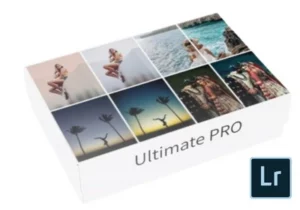
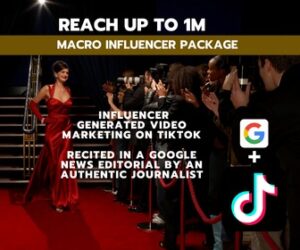
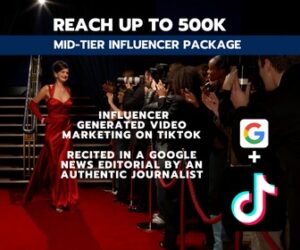
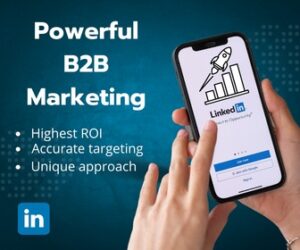
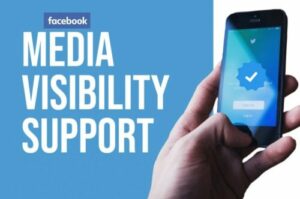


Influencer marketing is a relatively new practice in the marketing space, but it offers a wide variety of benefits.
Influencers are people who are active on social media and have a decent following. An influencer does not need to have over a million followers to be desirable to brands. In fact, in many cases a micro influencer with under 10,000 followers can serve to be more useful to a brand. This comes as a result of an engaged and active following. More than that, influencers tend to represent a unique area of interest, like makeup, skincare, fashion, fitness, or food.
By using an influencer to market a product or brand, a specific audience is targeted. For example, if a skincare brand outsources a micro influencer that posts skincare routines and product videos to their following of 5,000 users; the brand is likely to reach a high volume of those followers. This is as a result of the influencers prior association to that content. It would not seem openly promotional, or potentially irritating, to their followers, as this is the content they subscribed for.
Influencers tend to be more selective about the brands or products they work with. This is because they do not wish to alienate their audience, or promote a product that does not align with their own personal brand. A skincare influencer is not likely to promote athleisure, but a fitness influencer is.
There are three typical size categories for influencers. This is important to note when considering influencer marketing and drawing up a budget.
Mega influencers are at the pinnacle of success in the influencer market. These influencers tend to have over a million followers or subscribers, and are just under celebrities in terms of fame. Brands and businesses might be inclined to think that this is the best type of influencer to work with due to their reach, but this can be a misguided approach. Mega influencers, like celebrities, maintain a certain distance from their followers as a result of their volume. In addition to this, these influencers tend to not have a defined area of interest, or niche, that draws their followers in. As a result, brands may not get the desired effect of purchases from paid sponsorship.
Macro influencers are a step down from mega influencers in terms of audience, as these influencers tend to have between 100,000 followers to 1 million followers. Unlike mega influencers who are often influencers because of their fame, macro influencers are likely to have gained an audience through online content creation. This is frequently achieved through influencer platforms like TikTok, Youtube, and Instagram.
Brands should consider macro influencers if they want to target a larger audience, but still have a niche interest represented. This is where brands need to utilize influencers that cater to specific markets that are aligned with the brand’s values and product.
Micro influencers are known for having between 1,000 to 100,000 followers or subscribers. This is still a notable audience, and the influencer’s content still has the potential to become viral. These influencers are much more likely to have a designated area of interest, and are often experts in that area of interest. For example, many food publications have video content platforms on social media. They often create influencers out of their content creators, who become micro influencers in the food industry. These influencers provide an opportunity for brands, as they have a dedicated following that is invested in that specific area of interest. In the case of the food content creators, a brand like Nespresso or SMEG, would greatly benefit from paid sponsorship.
Nano influencers have the smallest following amongst influencers, with usually about 1,000 followers. These influencers often have more engagement with their audience, and are influential within their direct community. Brands are becoming more aware of the benefits of nano influencers, as they have been previously overlooked for macro or mega influencers. Brands are now choosing them, as they see the value of authentically partnering with an influential person. It is important to note that these influencers have a much smaller reach, and as a result may not yield an overwhelming amount of purchases or clicks. Despite this, brands are seen in a favorable light for providing nano influencers with sponsorships and opportunities.
Many consumers are frustrated by the prevalence of advertisements across social media, especially where advertisements are targeted as a result of data collection. This can feel invasive to consumers. Unlike promoted advertisements across social media and print, paid promotions with influencers can be less invasive, and are often enjoyed by viewers.
Because an influencer’s following are subscribed to them for a purpose, consumers often actively partake in promotions. This is due to the following being invested in the influencer’s opinion, as well as their content surrounding the promotion. Many influencers incorporate promotions in a way that is interesting. This can be through testing out the product on camera, or by taking an interesting and attractive photo of the product. This makes the experience enjoyable to viewers, and also allows for the promotion to appear organic and authentic.
By having an influencer promote a product, a brand distances themselves from the act of promotion. This is beneficial because consumers can become frustrated with brands consistently promoting their own products. In addition to this, the product gains more credibility if an influencer is shown as approving of the product. Every brand is proud of their products or services and will promote it as such, but when an influencer expresses satisfaction with a product, viewers will often see that as an unbiased opinion. This is particularly effective when influencers promote products that are within their area of interest and expertise.
Brands can also incentivize influencer endorsement without having to pay a fee. In these circumstances, influencers are sent products for free. Sometimes brands will send these products with the condition that the influencer posts on social media with the product. Other times, brands will send products freely and without attachments. The latter option can often be more effective, as if the influencer chooses to share the product, they can do so in their own words and with their own experience with the product. Viewers are often more partial to this form of advertisement of products, as it seems like a natural suggestion from a person they admire. This is a much more subtle way to garner promotion and it can be very effective in creating a return on investment.
Obtaining a simple quote from the Murdoch Empire, Disney, CNN, Comcast, The New York Times and Gannet – and then contrast that with the engagement fees of 5 influencers combined and a clear picture emerges: Influencers cost less than conventional media outlets – and they are way more trusted, especially since media companies are too involved with politics which only reduces trust.
The cost of any influencer’s promotion is varied depending on the size of their following, the engagement of their following, the type of paid promotion, and their relationship with the brand. A macro or mega influencer may be much more expensive than a micro or nano influencer. This is purely due to the scale of their following and their evaluation of their worth.
Macro and nano influencers often still expect to be paid for their promotion, over and above a provided product. However, these fees can be smaller and may offer a larger return on investment. It is important to note that influencer marketing can create more brand awareness than other forms of marketing, and can be a lot less expensive. If an influencer has an engaged audience, their suggestions will often turn into active sales for a brand or business, and this will outweigh the affordable fee the influencer charges. As noted above, some influencers will even create content for a brand in exchange for a product.
Sponsored content is the most prominent and popular type of influencer marketing. In this type of influencer marketing, brands reach out to influencers and ask for a rate for promotion. The influencer will then provide their rates in exchange for a set number of posts. Some influencers will be paid to make a single post, whilst others may be paid for multiple. Often influencers will even reach out to brands if they like their products and suggest a certain rate for their services.
The type of sponsored content varies depending on the specific social media platform that the influencer is popular on.
Reviews are perhaps the most organic way to represent a brand. Influencers receive products for free, and are then given the choice to either post content surrounding the product, or not. If the influencer decides to present the product in a video or post, it will often be in the form of a review. This may be done alongside other products, or within a post that is solely dedicated to one brand’s product.
Many influencers receive dozens of products per week, and this is often referred to as PR packages. The downside to this is that a brand has no control over whether the influencer posts content surrounding the sent product. This is a marginal loss though, as the brand would only lose out on the value of the product. However, reviews can be risky for brands, as there is always the chance that the influencer might not enjoy the product. If this is the case, and the influencer decides to test the product out for a video, the consequences could take the form of a negative review with high rates of viewership. This is complicated by the fact that the influencer’s viewers trust the influencer’s opinion, and this could alienate them from the brand and its products. Conversely, if the influencer posts a positive review, parts of the audience are likely to purchase the product. This would allow for substantial profit on marketing, as the cost for this promotion was nominal in comparison to the rewards.
A unique way for brands to tap into an influencer’s audience is to create a product launch in collaboration with the influencer. These collaborations are usually a form of limited edition release, and are aligned with the influencer’s niche and target demographic. Brands then leverage the influencer’s social media platforms to gain organic traffic and sales.
Recently, TikTok influencer Remi Bader has worked in collaboration with popular fashion brand, Revolve. Bader is known for releasing plus-size, fashion inspired videos to her 2 million followers. In the past, the influencer has criticized the brand for a lack of size inclusion. By collaborating with the brand, Remi was able to provide her audience with plus-size fashion that she was proud of. In addition to this, Revolve has been able to target a new and active demographic that they have not been able to reach in the past. Similarly, Beyonce created her brand, Ivy Park, in collaboration with Adidas. This was a very successful launch, as Adidas was able to combine their sportswear with Beyonce’s personal style, and reach an enormous audience of fans.
Brands frequently hire influencers and celebrities as ambassadors. This means that the influencer or celebrity becomes the ‘face’ of the brand, and consistently promotes its products. This can be an expensive form of influencer marketing and celebrity endorsement. However, it can be quite fruitful as the influencer or celebrity’s name often becomes associated with the brand.
In 2020, Emma Chamberlain became the global ambassador for Bad Habit, a recent addition to the skincare industry. Chamberlain’s ambassadorship for the brand was so successful that she was appointed as the creative director. The influencer, with over 11 million subscribers on Youtube and over 15 million followers on instagram, would regularly post video content of her using products from the Bad Habit line. The content was received well, and many viewers saw her ambassadorship as authentic. This allowed the brand, which was very new to the market at the time, to gain support and organic traffic.
Where to hire influencers:
Visit our Influencer Marketing Campaign section to get started.
Many brands have built an empire by optimizing their use of social influencer marketing. Revolve is estimated to attribute almost 70 percent of their overall sales to the traffic created by influencers. However, brands do not necessarily need to make use of as much influencer marketing as Revolve. Brands can afford to be selective with the influencers and celebrities they use, and still reach a large and engaged audience. As a result of this, influencer marketing as a multi-billion dollar industry.